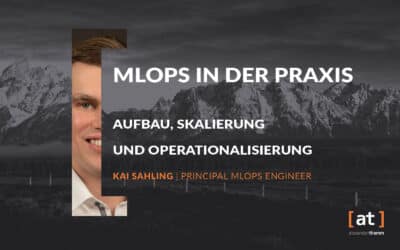Certain data science methods such as regression analysis can be described as common analysis methods. These can be distinguished from methods such as Machine Learning or Neural networkswhich, compared to the classical methods are more technologically advanced. These are therefore also called advanced analytics.
In particular, the ability to handle large amounts of data (Big Data) at low cost have led to the breakthrough of advanced analytics in recent years. But why is advanced analytics so important? This can be understood above all if it is first compared with its predecessor, classical business intelligence.
Reading tip: In our basic article we deal generally with Big Data, Data Analytics and Data Science as the key to digital transformation.
Inhaltsverzeichnis
Business Intelligence vs. Advanced Analytics
The term Advanced Analytics In contrast to the classical concept of Business Intelligence define. Due to the fundamentally different approach, the term predictive analytics is often used instead of advanced analytics. This emphasises that the data analyses do not simply examine past events, but that the analyses lead to forecasts about future events.
Instead of understanding after the fact why something happened, companies bring themselves with Advanced Analytics into a position where they Act proactively can. Advanced analytics is advanced compared to classical methods for several reasons, as the table shown here makes clear. With different methods such as machine learning, all kinds of data can be analysed, partly automatically.
| Business Intelligence | Advanced Analytics | |
|---|---|---|
| Orientation | The look back | Future-oriented |
| Question types | - What happened? - When, Who, How much? | - What will happen? - What will happen if we change this one parameter? - What happens next? - What are the recommendations for action? |
| Methods | - Report (KPIs, metrics) - Automated monitoring/alerting (thresholds) - Dashboards - Scorecards - OLAP (Dice, Sclice & Dice, Drilling) - Ad-hoc query | - Predictive modelling - Data mining - Text mining - Big Data Analytics - Descriptive modelling - Statistical/Quantitative Analysis - Simulation & Optimisation - Machine Learning - Artificial Neural Networks |
| Big Data | Yes | Yes |
| Data types | Structured, some unstructured | Structured and unstructured |
| Knowledge generation | Manual | Automatic |
| User | Commercial users | Data Scientists, Business Analysts, IT, Commercial Users |
| Entrepreneurial initiatives | Retroactive | Anticipatory and prescriptive |
On the distinction between predictive and prescriptive analytics
In the Big Data age, the trend is increasingly for companies to use the large amounts of data in Data Lakes store. Exploratory analyses can be used to unearth the insights hidden here, focusing either on predictions (Predictive analytics) or can be set to recommendations for action (Prescriptive Analytics).
The distinction between predictive analytics and prescriptive analytics is sometimes marginal, because an action is also derived from predictions, for example, when the maintenance of a machine must be carried out. Nevertheless, it can generally be said that predictive analytics and prescriptive analytics represent the two essential sub-aspects of advanced analytics.
Advanced analytics in practice
The areas of application of advanced analytics can hardly be limited to certain industries. Useful Use Cases can be found in almost all industries and economic sectors find. Certain application scenarios are more obvious such as risk management or Churn Prediction to prevent customer churn. But advanced analytics can even be used to better schedule the team in a retail shop.
Due to the ever-increasing flood of data and its easy availability, for example through cloud solutions, a value-enhancing use of the data is virtually the obvious way to improve the entrepreneurial processes not only to understand better, but also to better control to be able to
Analysis tools and techniques
A major advantage in the application of advanced analytics is that many analytical tools are open source and therefore available free of charge. Tools such as Hadoop, Hive or Spark are particularly useful in the initial proof of concept phase.
Based on this, the Data Scientist then, based on the specific question, one of the common analytical techniques to answer certain questions. Advanced analytics methods include, for example:
- Deep Learning or Machine Learning
- Neural networks
- Text mining or data mining
- Cluster procedure
- Decision trees
Better decision quality through advanced analytics
One of the drivers for using advanced analytics solutions is the desire to make better decisions. At the latest in Big Data Age it has become necessary to promote profitable insights from the daily increasing amount of data. Simply because of the sometimes high expenditure required to collect, store and manage data, it makes sense to use it to increase economic returns.
Advanced analytics methods generally lead to an increase in the quality of decisions because they are based on data-based forecasts. To begin with, it is a good idea to identify individual areas of application in order to gain positive experience with advanced analytics, but to embed them in a comprehensive, holistic data strategy.










0 Kommentare